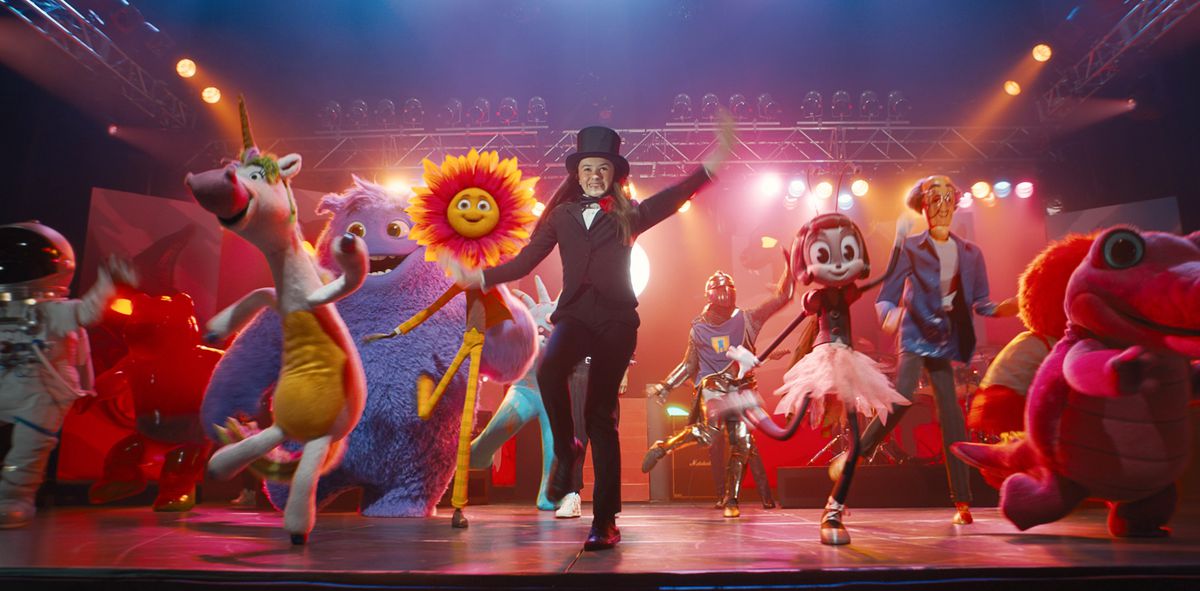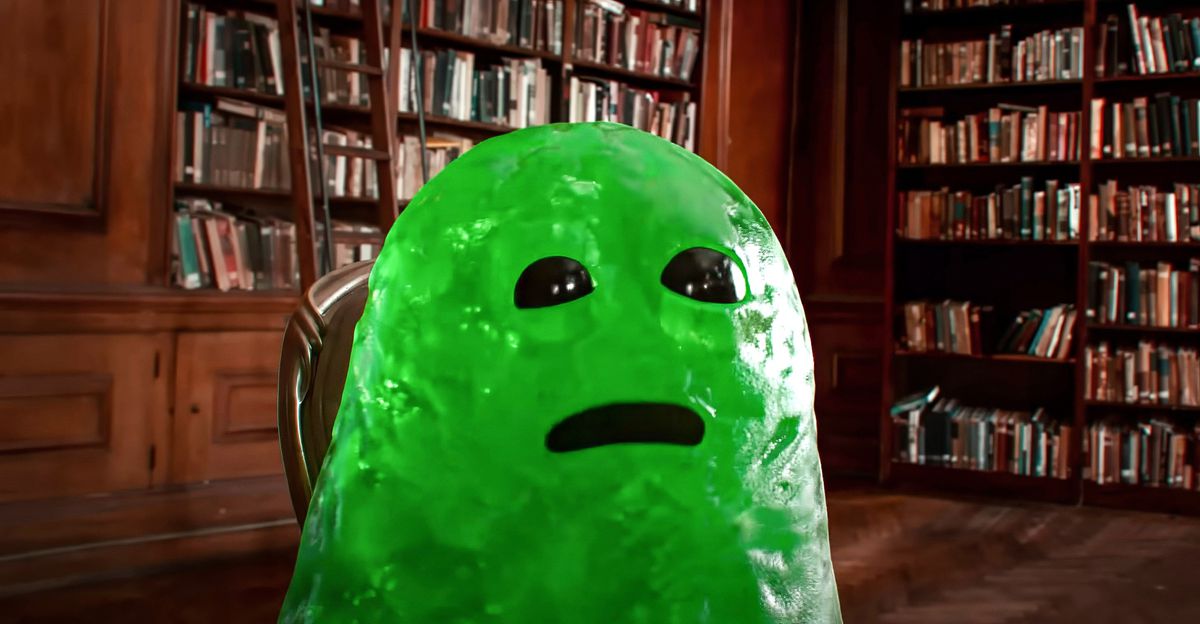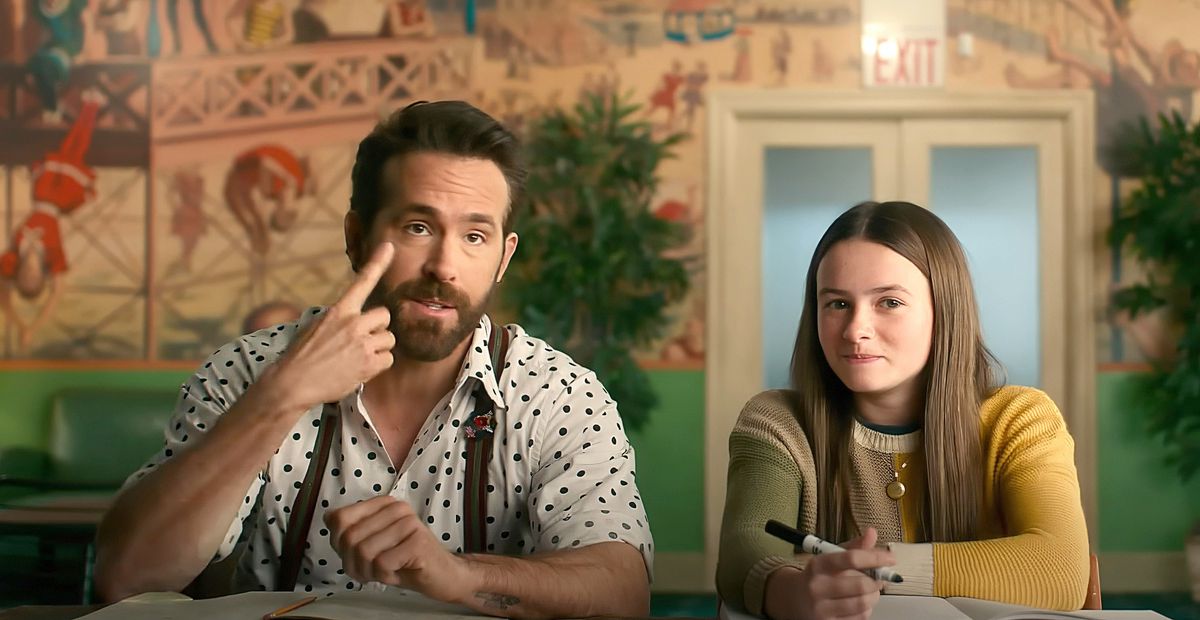IF is not a cute fantasy for children, it is a toxic fantasy for adults
Who is IF for? If you look at the marketing of the film or the trailer, the answer seems simple: children. But after seeing IFwritten and directed by John Krasinski (a significant departure from his A quiet place films), that answer no longer seems so simple. This “family comedy” isn’t particularly family-friendly or particularly comedic. There are at most a handful of lines that seem like jokes. Judging from the restlessness of the children in my screening, it is not for them at all.
IF feels more like a movie aimed at millennial parents: it’s overflowing with symbols of millennial childhood. Characters listen to music on treasured vinyl records and tap into their memories not on iPhones, but on old video cameras. Cell phones are not part of this world. Everything from the fairground rides to the furniture seems to come from the 1990s.
Plot-wise, that focus on millennial nostalgia makes sense. IF centers on 12-year-old Bea (Cailey Fleming), who recently lost her mother, and will soon lose her father (John Krasinski): he is about to undergo heart surgery. Bea discovers that she and her neighbor Cal (Ryan Reynolds) can see other people’s abandoned imaginary friends, and they launch a quest to reunite these ‘IFs’ with the children they imagined, to save the IFs – and the imagination of people – to keep them alive. .
Image: Paramount/Everett Collection
IF is all about how comforting and wonderful nostalgia is. This is a very familiar theme in today’s culture. Marketing trends have been pushing the nostalgia agenda. The same thing happens in pop culture, with popular movies and shows from the 80s and 90s Are you afraid of the dark? And Rugrats Unpleasant Top pistol And ToyStory rebooted and reimagined. This constant refreshing of the old is known as nostalgia bait. Even seemingly new shows like Stranger things are kept burning by the warm, seductive glow of nostalgia.
While it can be exhausting to live in a world that seems terrified of anything new, the rampant obsession with and dependence on nostalgia makes sense. Millennials have had to deal with it endlessly rising costs, poor track stabilityand a climate crisis with no end in sight, making it seem impossible to get ahead. We are the first generation to be that way worse off than the last. Wanting to retreat into familiar, reassuring childhood wish fulfillment is a logical next step.
However, Krasinski’s film uses nostalgia in the worst possible way. Rather than repeating familiar iconography to create new ideas, IF uses a barrage of fluffy, calorie-free whimsy, encouraging audiences to retreat into themselves and cling to the imaginary creatures of their childhood. The real world, he argues, is simply too difficult and too painful.

Image: Paramount/Everett Collection
IF‘s human characters are unable to face reality. Bea’s father is obsessed with using imagination to make things easier for Bea. When we first see him in the hospital, he is playing with his IV bag, which he has decorated with a wig to make it more attractive to his daughter. This infantilization – Bea constantly reminds him that she is not a child, in a plea for an honest conversation – prevents her from dealing with the potential reality of losing both her parents at the age of twelve. That’s a truly horrifying prospect, but IF treats Bea’s father like a hero and is warmly receptive to both her retreat into the imaginary and the film’s ultimate reminder that the past is exactly where she belongs.
Considering that IF claims to celebrate the infinite nature of imagination, but it’s telling that every IF in the film is a generic take on readily available toys, like stuffed animals, robots, and astronauts. Even the film’s primary IF, the giant purple-haired Blue (Steve Carell), is little more than a Grimace imitation. Some IFs are even lazier, conceptually speaking: a bell, a banana, a sunflower, a giant gummy bear, a literal ice cube in a glass.
The only laugh I let out over the course of the film’s 104-minute running time was when the ice cube (voiced by Bradley Cooper) revealed that his child was imagining him during a moment of thirst. The element of surprise in that line made me laugh, but the joke is alarmingly hollow and gets to the heart of the film’s problem. The best thing this boy could think of to satisfy his thirst was a glass of water with an ice cube in it? Not, for example, an endless fountain of all their favorite flavors of lemonade and soda, including flavors not yet invented? Maybe a free vending machine full of tantalizing, Willy Wonka-esque magical potions? Or at least a glass of apple juice?

Image: Paramount/Everett Collection
If IF was a smarter film, I’d view this parade of overly obvious, unimaginative imaginary characters as a commentary on how infantilistic this forced obsession with nostalgia has become – a warning that our nostalgia-coddled minds are incapable of legitimately original to evoke images based solely on variations on well-known themes. The most subversive interpretation of this film is that Krasinski is actually saying that all we can do is enjoy our past, which is very worrying. But if you believe that, it would mean that you don’t understand anything at all IF is so blatant referred to say.
(Ed. remark: From here, Major IF spoilers.)
The reunion between adults and their childhood imaginary friends is an important aspect of this IF. In a pivotal scene, Blue discovers that his creator child Jeremy is now an ineffectual, anxiety-ridden adult (played by Bobby Moynihan) preparing for a big business meeting. Jeremy is deeply unhappy, you see, because he is an adult, and there is no joy in that. He can only find some semblance of joy in this callous world if Bea and Cal help Jeremy remember Blue. The whimsy reaches a toxic high as Jeremy and Blue turn an orange hue, and Michael Giacchino’s constant, over-the-top score signals that Jeremy is finally at peace. As Jeremy retreats into his own youth, he may end up crushing the encounter he was so worried about.
If the message wasn’t obvious at the time, it becomes inevitable in the film’s big reveal: Cal isn’t Bea’s neighbor, he’s her own childhood IF. The fact that our protagonist imagined a generic adult man as her imaginary friend shows how lazy this film thinks its childhood imagination is.

Image: Paramount/Everett Collection
But it’s even more sinister than that, IF suggests: The only reason Bea was able to come to terms with her complicated feelings and the potential loss of her father was because she withdrew from adolescence and dove headfirst into the depths of her early childhood. The film’s final sequence supports this even further, as the lost IFs are reunited with their adults, all of whom seem instantly transformed to see the creatures they created as children. The resulting montage of loving, happy faces is meant to draw tears, but it feels ugly – an absolute rejection of reality and adult life, in favor of the emptiest, most unimaginative fantasies possible.
Instead of nostalgia bait, IF has created a nostalgia trap. This is a film that vehemently rejects one of the greatest hallmarks of life – growth and development – and encourages us to live in our past. It’s not really safer there. But as far as Krasinski and the filmmakers are concerned, it at least feels comforting to pretend.
